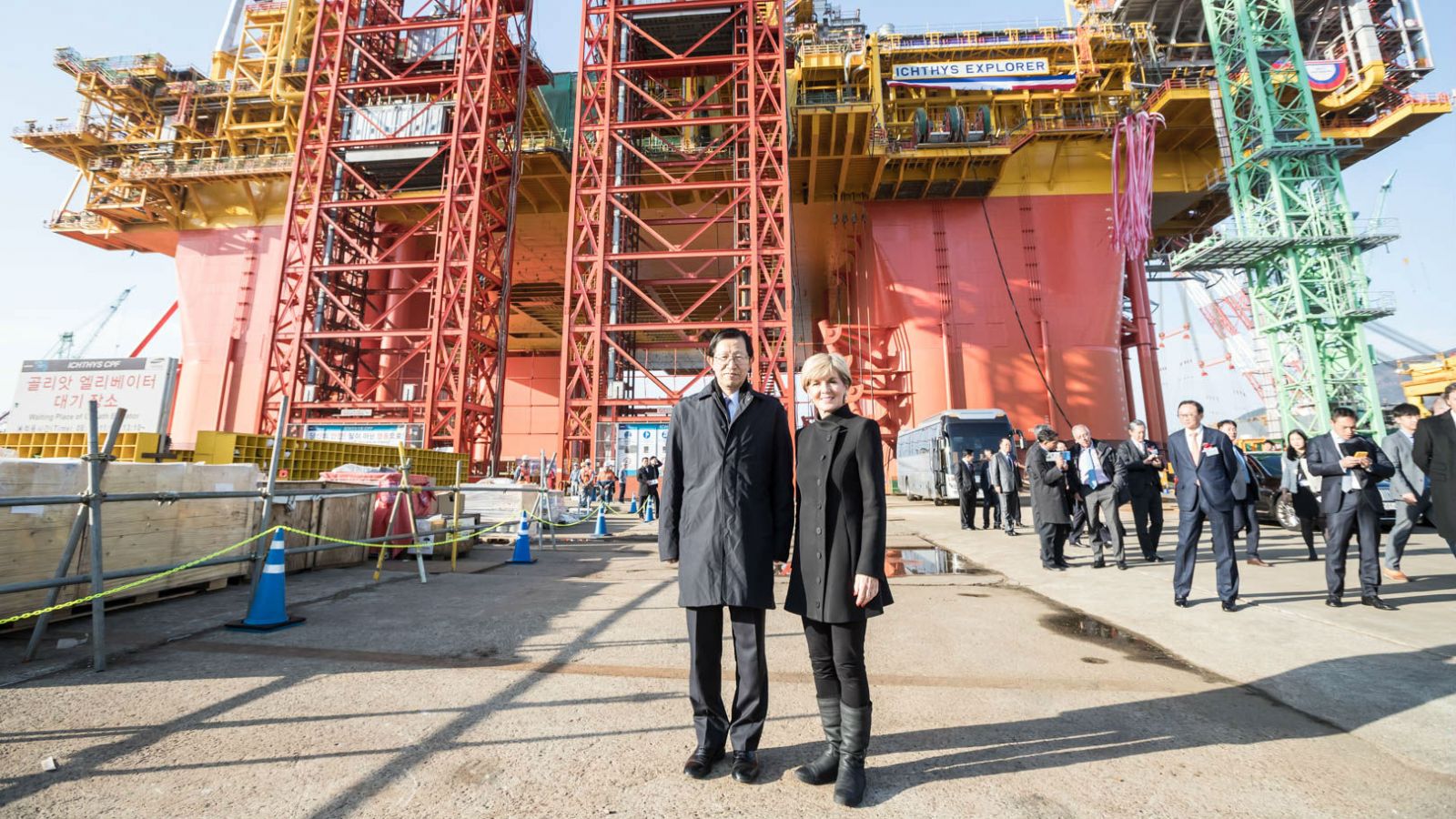Naming Ceremony Held for Ichthys Platforms

A naming ceremony has been held for both of the offshore platforms to be used in the Inpex-operated Ichthys LNG project off Australia.
The central processing facility has been named Ichthys Explorer and the FPSO Ichthys Venturer.
The two floating facilities will be located in the Ichthys gas-condensate field about 220 kilometres (137 miles) offshore from Western Australia. They are designed for 40 years of continuous operation.
At 130 metres (427 feet) by 120 metres (394 feet), the Ichthys Explorer is the world’s largest semi-submersible platform. It will receive well fluids from an intricate subsea gas gathering system, located at a water depth of approximately 250 metres (820 feet). It is a column-stabilized platform that contains hydrocarbon processing systems as well as living quarters for about 200 people and is being constructed in South Korea by Samsung Heavy Industries.
Most liquids will be transferred from the Ichthys Explorer to the 336 metre (1,100 foot) Ichthys Venturer for offshore processing and condensate offloading. The ship-shaped, weather-vaning vessel is being constructed in South Korea by Daewoo Shipbuilding and Marine Engineering. It has been designed to hold more than one million barrels of condensate.
After commissioning, the offshore facilities will be towed to the Ichthys field and moored by 40,000 tons of chain secured to more than 25,000 tons of foundation piles.
Linking Ichthys Explorer to the onshore production facilities is the longest subsea pipeline in the Southern Hemisphere, 42 inches in diameter and 890 kilometres in length.
Inpex completed installation of the subsea infrastructure for the project in January. The final laying of 49 kilometers of umbilicals and flying leads marked the last placement of an intricate subsea network, spread across a 400 square kilometer (155 square mile) area of the Ichthys Field. The work was carried out in water depths of around 250 meters (820 feet).
Included in the subsea gathering system is a 110 meter riser support structure, five manifolds, 139 kilometers (86 miles) of flowlines, 49 kilometers (30 miles) of umbilicals and flying leads, 2,640 tons of production and MEG spools, five subsea distribution units and a subsea distribution hub.
The Ichthys field has reserves estimates from two geological horizons of around twelve trillion cubic feet of gas and five hundred million barrels of condensate. This makes it the largest discovery of hydrocarbon liquids in Australia in more than 40 years.
When operational, the project is expected to produce 8.4 million tons of LNG and 1.6 million tons of LPG per annum, along with approximately 100,000 barrels of condensate per day at peak.
The project suffered a setback in January after engineering firm CIMIC involved in building the facility's power station announced its withdrawal from the project. CIMIC terminated its contract with JKC Australia LNG for the design, construction and commissioning of the Ichthys Combined Cycle Power Plant that will supply the Ichthys LNG export facility in Darwin with electricity. However, a spokesman for Inpex said that the power station is nearly complete and CIMIC’s withdrawal is not critical.
